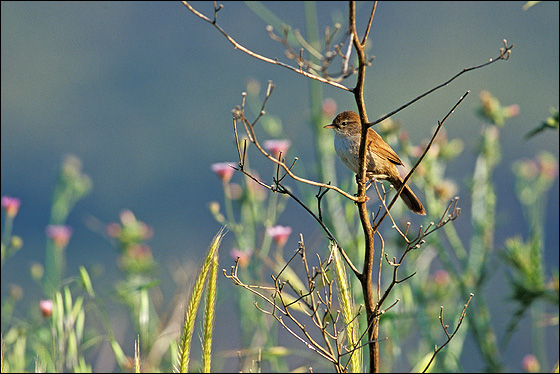Cetti’s Warbler (Cettia cetti)
Male Cetti’s Warblers often sing all year round – this is a perk of being one of the few European warblers not to be a long-distance migrant. Their territories are typically long and linear, following the course of a ditch, stream or path, for example, and may cover 100 m or so. By early spring, after a winter’s negotiation, most border disputes have been settled, and there is little obvious conflict between the males: instead the competition turns to the acquisition of females.
Whereas many a warbler is basically monogamous, with the odd instance of polygamy, Cetti’s Warblers do things the other way round: most breeding males attempt to acquire more than one mate and only a few settle for one. Perhaps not surprisingly some males are better at attracting females than others, and in one study from England, about 20% procured one mate, 30% two mates, 20% three, and a few even managed to hold on to four. Many of the rest remained unpaired in this evidently meritorious system.
Intriguingly, there is some evidence that the uneven distribution of pairing is related to the size of the males. The Cetti’s Warbler shows exceptional variability in body weight, both between male and female (the male is up to 20% heavier than a female, the greatest discrepancy of any small European bird) and between individual males. Some studies have suggested that the heavier males tend to acquire the most mates; and not only that, but their females also lay larger clutches of eggs.
Not surprisingly, with its attention divided, the male Cetti’s Warbler does not contribute to the domestic tasks of incubation are brooding the young, although it will feed nestlings at times. It will, however, be enthusiastic over providing for all of its fledglings before they become independent. Most male Cetti’s Warblers ensure that their females’ nesting cycles are not entirely concurrent, giving them the chance to devote some care to each brood, one at a time.

